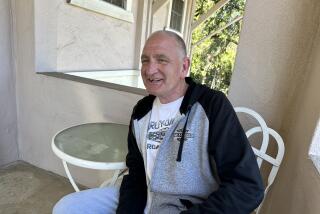TRACK AND FIELD : There’s a Glitch in the Drug-Testing Computer
- Share via
TAC’s random drug-testing program churns on, with its baffling rules and thankless chores. The system calls for the names of athletes in the top 15 in each event to be fed into a computer each month. The machine generates, randomly, names of 14 athletes to be tested each week.
TAC, track and field’s national governing body, releases the names of athletes who pass the test, but not the names of those who either fail or don’t show up for testing.
Sounds fair, and it usually is. But maybe not for Jackie Joyner-Kersee. Kersee’s name came up for three weeks in a row at the start of the year, and, after skipping two weeks, the computer again picked Joyner-Kersee for drug testing. Some athletes go an entire year without being tested.
How can this happen? Especially since Joyner-Kersee hasn’t competed since September of 1990. Here’s how, according to a TAC spokesman. Even though the ranking lists are revised monthly, they are based on performances over a 12 month-period. So, even an athlete who is not currently competing, such as Joyner-Kersee, is expected to report to testing.
Also, multi-event performers, such as Joyner-Kersee, may be ranked in the top 15 in several events, thus multiplying their chances of being randomly selected. In this case, Joyner-Kersee is ranked in the top 15 in five events.
Asked about this anomaly, Joyner-Kersee’s husband and coach called it “odd.”
“I wondered when someone would notice that,” Bob Kersee said last week. “It’s an inconvenience, but the good side is that people will know that she is--as she’s always said--competing drug-free.”
To be tested four times in six weeks hardly fits the definition of random.
“I was going to check into it, I’m that kind of person,” he said. “But I’ve got a wife who is very concerned about her image and she doesn’t want to complain about drug testing. The key word is random. If it is random, fine.”
Here’s another interesting aspect of the program. Let’s say Joyner-Kersee wanted to take the year off, no training, no competition. And let’s say she planned to do a lot of traveling and wouldn’t be home on a regular basis, so she wouldn’t be available for testing at a moment’s notice.
Forget it. Under the rules, Joyner-Kersee can’t take a year off. She would be required to write a letter to the TAC office and either announce her retirement, or take a forced two-year vacation. TAC does not allow athletes, even if they are completely out of the sport, to take a year off drug testing and then come back.
The theory is that athletes would drop out for a year with a fake injury or false excuse, then take massive amounts of drugs and come back the next year.
It’s within the realm of possibility that an athlete might take a year off to train and take drugs: Never mind that even a year is precious to athletes whose time within a sport is brief, and never mind that the athlete would be losing an edge by not competing.
And forget about the athlete who is truly injured or the woman who takes a year off to have a baby and can’t get to a testing site every week. Tough. If you want to take off a year, you must take two.
TAC is trying to do something about the drug problem. But clearly, the drug-testing protocol is trampling on athletes’ civil rights.
Things are still being sorted out in the former East Bloc countries, as they come to grips with the new openness . . . and human greed.
Take the case of Iakov Tolstikov. Tolstikov ran the race of his life two weeks ago to win the London Marathon. He was also to win $60,000, but it remains to be seen whether he’ll see much of that prize money.
According to The European, a London-based newspaper, Soviet officials arrived at the office of the race director the day after the marathon and demanded they be given Tolstikov’s $60,000.
Having been down that road before with East European federations, the race director negotiated a 50-50 split, giving Tolstikov at least $30,000. However, the federation is not subject to taxation and Tolstikov is, which brought his earnings down to $22,000.
Then, catching the scent of money, Tolstikov’s coach was to get 20% of the net prize money, bringing the runner’s take down to about $18,000. Negotiations with the coach regarding his cut are still not resolved.
Next problem: how to change his dollars into rubles, something that is not possible in Tolstikov’s small town in Siberia. One way around this would be to open a bank account in London. For that, he’d need a Western sports agent. Of course, the agent would require 10% of Tolstikov’s winnings.
In the end, the Soviet runner could actually receive about $16,000 of his $60,000 prize money.
Track Notes
There is much talk of rejuvenating USC’s track and field program. On June 17, the Cromwell Field track will be resurfaced at a cost of $200,000. Coach Jim Bush and his wife Francoise donated the first $1,000. “Now all I have to do is raise $199,000,” Bush said. USC’s track was last resurfaced in 1983, in preparation for the 1984 Olympics. . . . Those interested in racing up 52 flights of stairs in a downtown high-rise should contact the Southern Pacific Assn. of TAC. The race is May 21 at the 777 Tower, at 8th and Figueroa.
More to Read
Go beyond the scoreboard
Get the latest on L.A.'s teams in the daily Sports Report newsletter.
You may occasionally receive promotional content from the Los Angeles Times.







